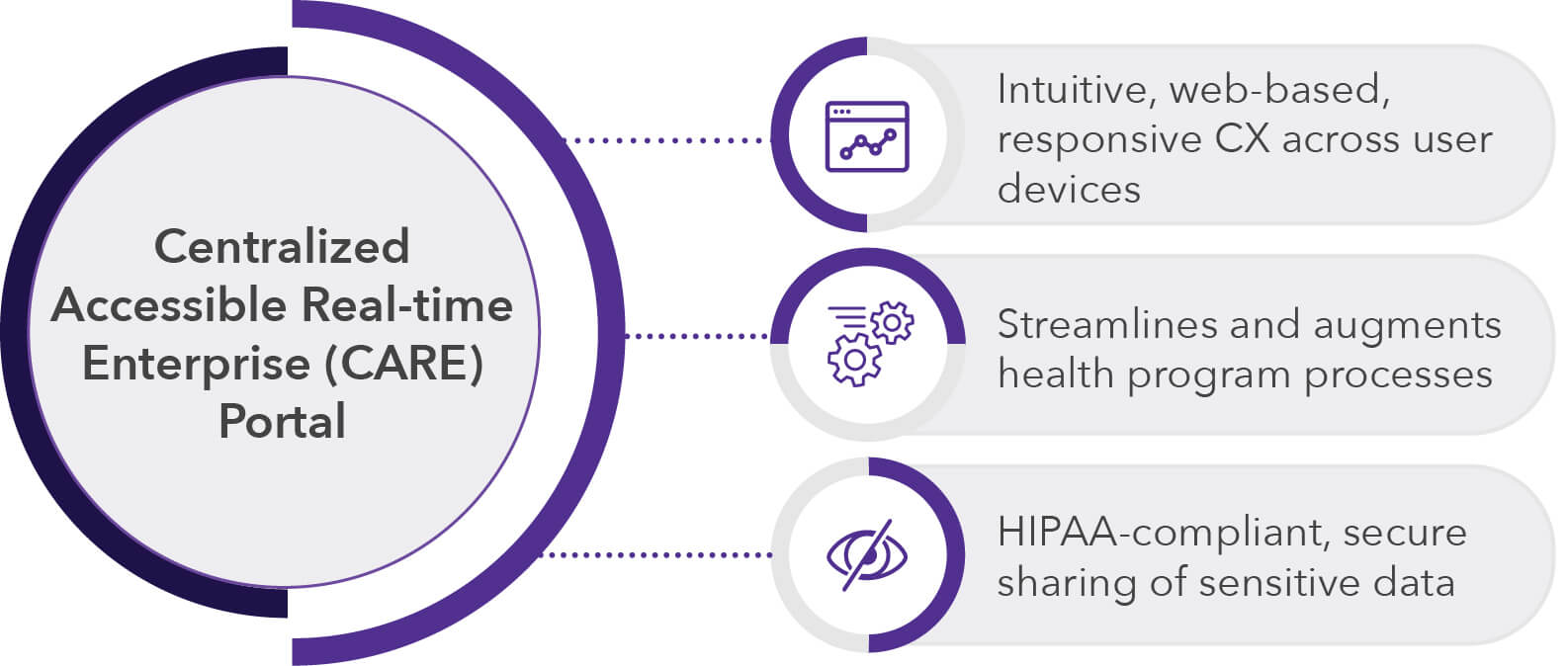
Enabling treatment for World Trade Center survivors and responders
Key takeaways
The World Trade Center (WTC) Health Program (WTCHP) provides medical monitoring, compassionate healthcare, and treatment for eligible people impacted by 9/11. The National Institute for Occupational Safety and Health (NIOSH) tapped Maximus to support development of a comprehensive solution to bridge disparate program applications. The resulting web-based portal provides a secure, intuitive user experience and has enabled treatment of 84K+ responders and 36K+ survivors.
A health program portal with real-time access and a centralized database
Situation
Established in 2010 with the passage of the James Zadroga 9/11 Health and Compensation Act, the WTCHP provides care for responders, survivors, recovery and cleanup workers, volunteers, and those who lived, worked, or attended school in the disaster areas. Screenings and treatment are provided through Clinical Centers of Excellence (CCE) in the New York metro area and throughout the country.
Challenge
WTCHP operations were managed by multiple disparate applications ranging in form, function, and accessibility. NIOSH needed a comprehensive, secure solution to effectively bridge all disparate systems while supporting future modernization of WTCHP.
Solution
Maximus developed the Centralized Accessible Real-time Enterprise (CARE) Portal using a cross-platform, multi-client service-oriented architecture (SOA) to serve as the foundation for the WTCHP. The portal:
- Enables authorized staff to perform WTCHP activities including enrollment application processing and member 9/11-related health condition certifications
- Provides intuitive and responsive customer experience across multiple modern workplace devices
- Includes dynamic levels of authorization to ensure data security
- Streamlines and augments processes to maximize efficiency, integrity, and timeliness
- Secures sharing of sensitive personal data in compliance with the Health Insurance Portability and Accountability Act (HIPAA)
Bridging disparate systems to support future modernization.

How we did it
Maximus addressed WTCHP’s current and future requirements with a solution that utilized:
- A collaborative approach and strategy, leveraging internal and external technology services for joint development
- Cross-platform, open-source frameworks optimized for modern, adaptable, and customizable capabilities
- Agile, adaptable workflows that provide flexibility to meet changing program requirements and future growth
- Expert categorization and documentation with appropriate storage and multi-domain access, enabling valuable analytics for data-driven program decisions
Results
- Provided 600+ WTCHP, Health Program Support, and CCE users with real-time, web-based access through a centralized database
- Enabled identification and treatment of 84K+ responders and 36K+ survivors